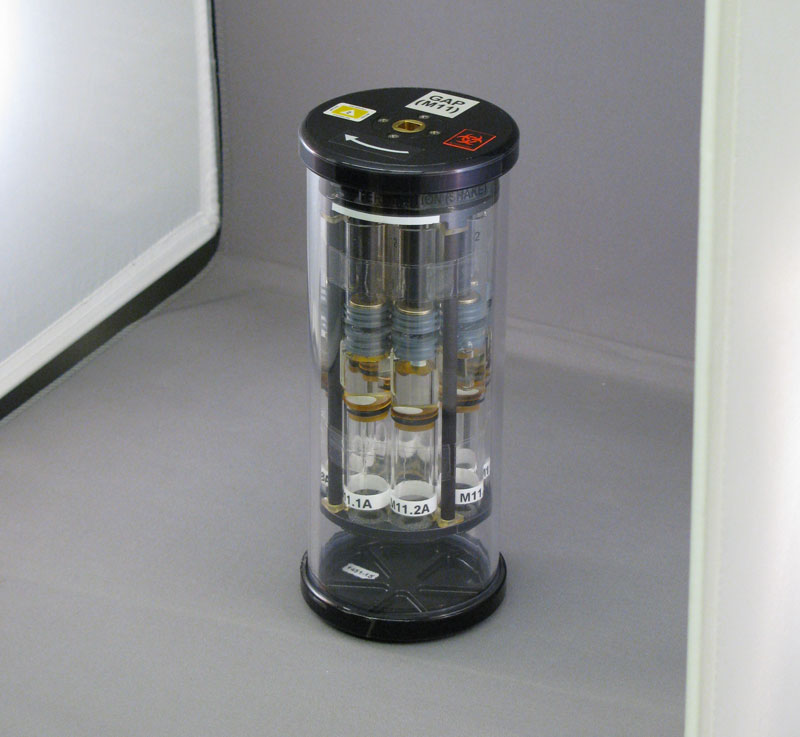Astronauts and the Elderly Share Balance Issues

This ScienceLives article was provided to LiveScience in partnership with the National Science Foundation.
Kathleen Sienko experienced microgravity for the first time when she was 21 years old. As part of a student project in engineering, she flew in a NASA training plane to test ways to detect structural damages to spacecraft. Although an eye injury precluded her initial dream of becoming an astronaut, she stayed closely involved in space-related research. She studied the physiological effects of long-duration spaceflight during summer internships at various NASA centers, and completed graduate studies in medical engineering and bioastronautics at MIT and Harvard. Now at the University of Michigan, Sienko investigates the use of sensory substitution technology in the design and development of prostheses and rehabilitation aids for people with impaired balance. One of her prototypes uses a cell phone to provide vibrational cues to a person when he or she begins to lose balance—helping the elderly, persons with vestibular deficits and post-flight astronauts maintain stable posture while standing or walking. In addition to pursuing balance-related research, Sienko and her students engineer easy-to-use, low-cost medical technologies for resource-limited settings. Below, Sienko answers the ScienceLives 10 Questions.
Name: Kathleen Sienko Age: 34 Institution: University of Michigan Field of Study: Engineering
What inspired you to choose this field of study? I am passionate about space exploration, and after working on a balance-related study that employed individuals with vestibular deficits as analogs for astronauts returning from long-duration spaceflight, I came to appreciate the daily challenges associated with inner ear disease and was inspired to pursue research that would have a positive impact on the quality of life for persons with balance deficits.
What is the best piece of advice you ever received? Don’t be afraid to fail—the only real failure in life is the failure to try.
What was your first scientific experiment as a child? I can’t remember my first scientific experiment as a child, but my most memorable science activities included designing, building, and launching model rockets, monitoring solar flares at a local observatory and looking at slides on a toy microscope.
What is your favorite thing about being a scientist or researcher? Working with an interdisciplinary team to seek out new problems and brainstorm novel solutions.
Sign up for the Live Science daily newsletter now
Get the world’s most fascinating discoveries delivered straight to your inbox.
What is the most important characteristic a scientist must demonstrate in order to be an effective scientist? Rigor.
What are the societal benefits of your research? My research focuses on the design and assessment of devices for improving balance and the development of low-cost, easy-to-use technologies to benefit global health.
Who has had the most influence on your thinking as a researcher? In graduate school, I had the privilege of working with a research engineer by the name of Dave Balkwill who had a meticulous and systematic approach to problem solving. My research experience at NASA trained me to always have a contingency plan, which is particularly important when conducting field work.
What about your field or being a scientist do you think would surprise people the most? The amount of travel. During the past year, work has taken me to Washington, D.C., Pittsburgh, Minneapolis, Morgantown, Geneva, Copenhagen, Kampala, Dar es Salaam, Kumasi, Reykjavik, Bangkok and New Delhi.
If you could only rescue one thing from your burning office or lab, what would it be? Assuming that the students made it out, I would rescue my field notebooks and the scrapbook that a team of undergraduates made for me following our field site work in Ghana.
What music do you play most often in your lab or car? I have less than a five-minute commute to work. More often than not, I listen to NPR. I have a fairly broad taste when it comes to music.
Editor's Note: This research was supported by the National Science Foundation (NSF), the federal agency charged with funding basic research and education across all fields of science and engineering. Any opinions, findings, and conclusions or recommendations expressed in this material are those of the author and do not necessarily reflect the views of the National Science Foundation. See the ScienceLives archive.









